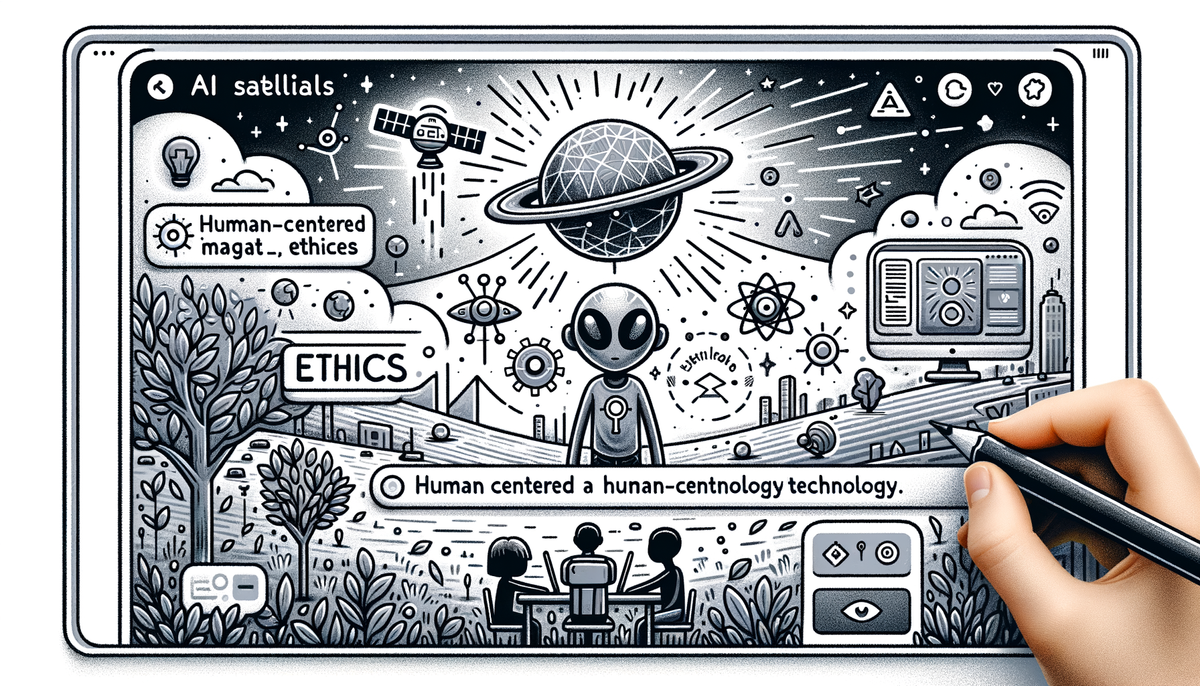Tim Cook's Commitment to AI Talent and Innovations in Technology

This comprehensive exploration of artificial intelligence delves into the latest breakthroughs—from Google’s cutting-edge Gemini 2.5 Pro model and the emergence of Super-Turing AI to transformative applications in healthcare, automotive technology, and cybersecurity. We also examine the increasing necessity for legal and ethical frameworks, exemplified by recent legislative action on AI-generated content, and highlight global talent initiatives that underscore the innovative spirit driving AI’s evolution. In weaving together these diverse threads, the article captures AI’s far-reaching impact on society, business, and technology while offering rich insights and practical examples of where the future may be headed.
The Evolution of AI: From Gemini 2.5 Pro to Super-Turing Innovations
Artificial intelligence has long been a realm of both boundless potential and daunting challenges. One of the latest advances comes from Google, which recently unveiled the Gemini 2.5 Pro model, touted as its “smartest” AI yet according to a report on Ars Technica. This model is positioned at the forefront of innovation, boasting enriched reasoning capabilities, more robust language understanding, and refined training methodologies. Google’s continuous research investment signals a broader industry trend where models are no longer just large-scale data processors but are evolving into truly intelligent systems that can engage with human nuances in dynamic ways.
While the Gemini 2.5 Pro represents a technical leap, its introduction also indicates how commercial and research interests are converging. The evolution of AI models is driven by an imperative to make systems more accessible, energy-efficient, and ethically aligned with human values. Reflecting on these advancements, I often recall Stephen Hawking’s famous remark:
“Artificial intelligence is a tool, not a replacement for human intelligence.”
This reminder not only tempers our expectations but also urges developers to balance machine capabilities with the irreplaceable qualities of human cognition.
Complementing such progress is the advent of what researchers are calling Super-Turing AI. Unlike traditional Turing machines, Super-Turing AI mimics the parallel, energy-efficient cognitive processes of the human brain. By leveraging neuro-inspired algorithms, engineers are crafting systems that execute complex tasks at a fraction of the energy cost—a vital improvement in an era where data centers burn through enormous quantities of power.
Recent studies indicate that conventional data centers could significantly benefit from integrating principles inspired by neuroscience. These neuro-inspired systems employ distributed cognition and parallel processing, analogous to how our brains work, thereby minimizing reliance on sequential processing that often creates bottlenecks. In doing so, not only does the performance of these systems see a marked improvement, but environmental concerns linked to high energy consumption are also alleviated.
Legal and Ethical Boundaries: Addressing AI-Generated Content
Even as AI powers breakthroughs across multiple sectors, its misuse has escalated concerns that demand immediate attention. In a noteworthy development, the Oklahoma House of Representatives recently passed House Bill 1364—a legislative initiative designed to extend laws against revenge pornography to include images generated by artificial intelligence. The unanimous vote in the Oklahoma legislature underscores a collective resolve to adapt legal frameworks in response to technological evolution. Advocates for digital ethics argue that the ability of AI to generate realistic, non-consensual explicit content is deeply troubling and necessitates rigorous regulatory oversight.
Revenge pornography has long been a harrowing issue, and when combined with AI’s capabilities, the potential for harm magnifies dramatically. Lawmakers like Rep. Toni Hasenbeck emphasize that even digitally fabricated images can violate personal dignity and privacy. This proactive response is not isolated; legislation expanding the definition of child pornography to include AI-generated content has already set a powerful precedent. Such measures are critical as they signal that as technology evolves, so too must our legal systems.
Legal experts anticipate that this legislative stride will stimulate broader dialogue on digital rights and privacy in an increasingly AI-driven world. As discussions in the field progress, it remains crucial that policymakers, technologists, and societies work in tandem to ensure that our laws do not lag behind technological capabilities. It’s a challenge reminiscent of the age-old balance between freedom and responsibility—a challenge that defines many of today’s debates in digital transformation.
Optimizing Efficiency: The Promise of Super-Turing AI
Energy consumption is one of the most significant challenges facing modern technology, and nowhere is this tension more palpable than in the realm of artificial intelligence. The concept of Super-Turing AI, introduced by researchers working to emulate the efficiency of the human brain, provides an enticing avenue for reducing energy use in computational tasks. By moving away from the binary, sequential processing that has traditionally governed computing, Super-Turing AI adopts parallel processing mechanisms that allow for rapid, simultaneous data handling—a method akin to the way neurons in the human brain collaborate.
This neuro-inspired approach does more than just boost speed; it also drastically reduces the energy footprint of AI operations. Energy reductions in these systems translate not only into cost savings for businesses but also into a smaller environmental impact—a benefit that is increasingly significant as the world grapples with climate change. Engineers and researchers are exploring how these principles can be adapted across industries that rely on vast computational resources—from financial modeling to weather prediction. The dual benefits of increased computational efficiency and reduced environmental impact offer a compelling case for the wider adoption of Super-Turing technologies.
One of the most striking advantages of such systems is the concept of distributed cognition, where complex tasks are broken down and processed in a manner that mirrors the human brain’s operation. This approach not only leverages the efficiency of biological systems but also sets the stage for creating AI that is inherently adaptable and resilient. The promise of Super-Turing AI demonstrates that by learning from nature, we can engineer digital systems that are both powerful and sustainable.
For those following our in-depth analysis on the transformative role of digital labor in AI, this discussion on energy efficiency aligns with insights shared in our post on Digital Labor, AI’s ‘Halo Effect’. Both articles underscore the critical importance of innovation that respects both technological advancement and environmental stewardship.
Revolutionizing the Road: AI in the Automotive Sector
Artificial intelligence is not confined to research labs or data centers—it is also steering substantial changes in the automotive industry. A striking example of this trend is the innovative partnership between BMW and Alibaba, aimed at reinventing the in-car experience for Chinese consumers in BMW’s forthcoming Neue Klasse models. At the heart of this initiative is the integration of Alibaba’s advanced Tongyi Qianwen large language model with BMW’s smart cockpit technology, resulting in an AI-powered system that enhances everything from vehicle diagnostics to dynamic infotainment.
BMW’s approach is built on a co-development framework that layers its own proprietary interface over Alibaba’s foundational technology. This fusion not only leverages the natural language processing power of modern AI but also creates an experience that is finely tuned to the needs and preferences of local consumers. The system, which has already demonstrated a near-perfect 99% recognition and response rate in lab tests, is set to redefine what drivers can expect from their vehicles. Imagine a car that can proactively adjust its internal environment based on your emotional cues or seamlessly guide you to the nearest restaurant while keeping track of traffic conditions.
Furthermore, the system includes innovative agents like Car Genius and Travel Companion. Car Genius acts as a technical advisor, offering real-time diagnostics and maintenance insights, while Travel Companion personalizes entertainment and dining suggestions based on user profiles and contextual data gathered in real time. This is a clear exemplar of how AI is moving beyond mere automation to create deeply personalized user experiences.
BMW’s initiative also exemplifies the broader trend of blending physical products with digital experiences. In our earlier post on AI Innovations Transforming Our World, we explored how AI integrations are not just add-ons but transformative forces that redefine entire industries. By embedding AI deeply into the automotive ecosystem, BMW and Alibaba are setting a fresh standard for in-car technology that could soon influence global practices.
The layered architecture—incorporating voice commands, gesture recognition, and even eye tracking—illustrates how automotive AI is becoming as much about creating an immersive digital environment as it is about driving. This is especially crucial in markets like China, where younger, tech-savvy consumers are hungry for interactive and responsive technology experiences.
Strengthening Defenses: The NIST Cybersecurity Roadmap
A crucial aspect of advancing AI technologies is ensuring their secure deployment. As AI and machine learning become integral to various sectors, they also emerge as attractive targets for cyberattacks. The National Institute of Standards and Technology (NIST) has recognized this duality by releasing its final report titled "AI 100-2 E2025: Adversarial Machine Learning." This comprehensive document systematically categorizes potential vulnerabilities in AI/ML systems, ranging from data poisoning and input manipulation to intellectual property theft.
The report serves as a critical guide for organizations developing and deploying AI, offering an intricate taxonomy that helps identify where AI systems might be compromised. It underscores that while AI offers immense benefits, these technologies are not immune to malicious interference. By establishing standardized frameworks that delineate threats and outline robust countermeasures, NIST is fostering a culture of vigilance and resilience. Organizations are encouraged to adopt these guidelines as part of a broader AI risk management strategy.
Interestingly, the report's classification of attacks is not merely academic—it has real-world implications. For instance, in sectors such as finance, healthcare, or even automotive technology, knowing the specific stages where AI can be vulnerable enables targeted interventions. In a rapidly evolving digital landscape, such insights are invaluable, as they help companies devise strategies that fortify their systems from evolving attack vectors.
While the report predominantly addresses adversarial machine learning in terms of technical remediation, it also implicitly calls on the industry to prioritize transparency and collaboration. Establishing common terminologies and frameworks across sectors ensures that cybersecurity is not an afterthought but a fundamental component of AI development. This report is a clarion call for all stakeholders to bridge the gap between innovation and security, ensuring that the benefits of AI are not undermined by preventable vulnerabilities.
Transforming Healthcare through AI-Assisted Clinical Decision-Making
The transformative potential of AI is not limited to manufacturing or digital communications—it is increasingly revolutionizing healthcare as well. AI-assisted clinical decision-making represents one of the most promising applications in modern medicine. Advanced computer vision and diagnostic algorithms are now aiding radiologists in identifying abnormalities in medical imaging with unprecedented precision. One notable example is Bayer's Calantic Digital Solution, which leverages AI to consistently assess a range of diseases across diverse patient profiles.
This breakthrough is significant for several reasons. First, it provides a far more consistent diagnostic approach, reducing human error that can stem from fatigue or oversight. Second, AI systems can analyze massive volumes of data quickly, ensuring that incidental findings or subtle anomalies are not overlooked. In a field where every moment counts, such enhancements not only improve outcomes but also bolster the confidence of healthcare professionals in their decision-making processes.
Furthermore, AI-driven tools like Vesta by Valar Labs are already making an impact by predicting patient outcomes based on complex pathology data. These systems analyze digital images to discern patterns indicative of disease prognosis and recurrence, paving the way for more personalized and effective treatment plans. In this environment, AI is not a substitute for human expertise but a powerful supplement that enhances clinical judgment with data-driven insights.
The future of AI in healthcare further aligns with our earlier discussions on Charting the Future of AI in Various Sectors, where the convergence of technology and medicine is creating more targeted, efficient, and patient-centric care protocols. As medical data continue to grow both in volume and complexity, AI’s ability to sift through and interpret this information will become an indispensable asset in managing health crises and optimizing patient care.
While the healthcare industry grapples with the intricacies of modern medicine, AI stands as a beacon of hope, simplifying the complexities of clinical decision-making and ensuring that treatment choices are both timely and accurate. Such technological enhancements are particularly critical in an era where the demand on healthcare systems is constantly increasing.
Global Impact and Future Directions: Nurturing Talent and Expanding Horizons
In parallel to these technological and sector-specific breakthroughs, there has been a notable push to nurture next-generation talent in the field of AI. A striking reflection of this commitment is found in the recent visit of Apple CEO Tim Cook to Hangzhou, China's burgeoning tech hub. During his visit, Tim Cook announced a 30 million renminbi fund—the Apple Mobile App Incubation Fund—aimed at fostering local talent and providing crucial technical resources and mentorship for aspiring developers in China.
This initiative underscores a vital strategy: as AI technologies evolve at breakneck speed, the human capital required to innovate, adapt, and maintain these systems must grow in tandem. With prominent cities like Hangzhou emerging as epicenters of technological innovation, investments in talent are becoming as crucial as investments in technology itself. Tim Cook’s visit further illuminated how major corporations are working hand in hand with local communities and academic institutions, such as Zhejiang University, to cultivate a vibrant ecosystem of AI innovation.
Moreover, this development coincides with strategic moves by other industry giants. For instance, alongside Apple’s new incubator efforts, there are signs of collaboration between technology behemoths like Alibaba and local automotive innovators, as seen in the BMW in-car AI initiatives discussed earlier. With companies recognizing the immense potential of artificial intelligence to revolutionize user experience, production processes, and even urban mobility, the collaborative ethos is stronger than ever.
These global interactions serve as a reminder that the future of AI is as much about building robust technological infrastructures as it is about forging partnerships that span cultures and industries. By nurturing local talent and encouraging cross-border collaborations, companies are not only advancing their technological prowess but also contributing to the democratization and decentralization of AI innovation. This global perspective ensures that AI continues to be a force for good, driving progress and improving lives across continents.
It is worth recalling the insightful words of Ginni Rometty:
"Some people call this artificial intelligence, but the reality is this technology will enhance us. So instead of artificial intelligence, I think we’ll augment our intelligence."
Such reflections capture the essence of AI’s transformative journey—one that augments human capabilities rather than replaces them, emphasizing a future where technology and humanity grow together.
Convergence of Innovation and Ethics: A Vision for Tomorrow’s AI Landscape
The panorama of AI developments highlighted above—from Google’s Gemini 2.5 Pro and the energy-efficient Super-Turing AI to transformative applications in healthcare and automotive industries—reveals profound implications for society at large. However, with great power comes a proportional responsibility to ensure that technological advancements are harnessed ethically. Legislators, technologists, and business leaders are increasingly aware that the societal impact of AI hinges not only on innovation but on the careful construction of ethical boundaries and robust security measures.
At its core, today's technological journey is an intricate balancing act: pushing the envelope of what machines can achieve while steadfastly protecting the rights, privacy, and dignity of individuals. Initiatives such as Oklahoma’s expanded legal framework against AI-generated revenge porn serve as timely reminders that technological prowess must always be tempered with ethical considerations. Likewise, the meticulous strategies outlined in the NIST report on adversarial machine learning reiterate that cybersecurity cannot be an afterthought but must be an integral component of AI development.
Moreover, these discussions point to an inevitable convergence—a convergence of research, industry innovation, and ethical oversight that will define the next chapter of artificial intelligence. Whether it’s the creative spirit behind automotive AI systems tailored for a tech-savvy younger audience or groundbreaking clinical decision-making tools that augment the capabilities of healthcare professionals, each advancement contributes to an intricate mosaic of progress.
For readers interested in further exploring the transformative power of AI across industries, you might find our previous posts on Shaping the Next Generation of AI Users and AI Innovations Transforming Our World highly insightful. These articles provide additional context and examples of AI’s pervasive influence, complementing the themes discussed here.
Indeed, in current debates surrounding the evolution of technology, it is imperative to also consider the role of global alliances and cultural exchanges. As emerging markets burgeon into technology hubs and as companies commit resources not only to research but also to talent development, we are witnessing the birth of a generation of AI innovators who will drive the next wave of breakthroughs—responsible, secure, and immensely creative.
Further Readings and Reflections
For those eager to dive deeper into the multifaceted nature of AI and its transformative potential, the following resources offer additional perspectives and research insights:
- Google Says the New Gemini 2.5 Pro Model Is Its “Smartest” AI Yet – Ars Technica
- Bill Prohibiting AI Revenge Porn Sent to Senate – Oklahoma House of Representatives
- 'Super-Turing AI' Uses Less Energy by Mimicking the Human Brain – Tech Xplore
- How BMW and Alibaba Are Reimagining In-Car AI for China’s Neue Klasse – BMWBLOG
- NIST Releases Final Report on AI/ML Cybersecurity Threats and Mitigations – HSToday
- ‘Great Promise’ for AI-Assisted Clinical Decision-Making – Yahoo Finance
- Tim Cook Steps Into Hangzhou, Backs AI Talent with $4M Apple Fund – Yahoo Finance
As we chart the future of artificial intelligence, it is clear that innovation, ethical practices, and collaborative spirit will be the cornerstones that define the technology’s journey ahead. The interplay of advanced models, legislative safeguards, and global talent development not only shapes today’s landscape but also paves the way for a sustainable and inclusive future in AI.



Comments ()